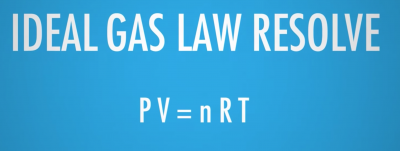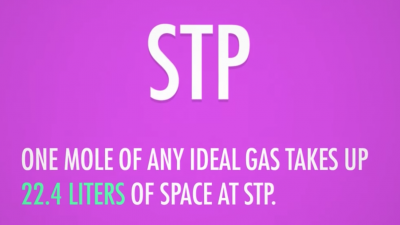Difference between revisions of "Ch5 Lec 2"
Jump to navigation
Jump to search
| Line 19: | Line 19: | ||
<div align="right"> Answer: 2.0 atm </div> | <div align="right"> Answer: 2.0 atm </div> | ||
| − | ==== | + | ====Charles' Law Question==== |
| − | :So if you have a container of gas at | + | :So if you have a container of gas at a temperature of 298 K pressure (P<sub>1</sub>) and 1.0 L volume (V<sub>1</sub>)...if the temperature is changed to 0.5 L (P<sub>2</sub>), then what happens to the pressure? |
| − | ::Use: | + | ::Use: V<sub>1</sub>/T<sub>1</sub>=V<sub>2</sub>T<sub>2</sub>; |
<div align="right"> Answer: 2.0 atm </div> | <div align="right"> Answer: 2.0 atm </div> | ||
Revision as of 02:35, 30 March 2020
Greetings,
- If you look on the webpage, you will see that there is an active link to the Exam 2 on Friday April 3. I suggest you have a look at that link to give you more information about the format of the exam.
Note that the chapter 5 outline was given in Lecture 1. I have chosen to focus our attention on only the first 4 sections of chapter 5.
The following two sections are both discussed in the following Crash Course...please note that these crash course videos provide a huge amount of information in a short time period. This one in particular goes into a lot of the background histroy, which is an important thing to know, but will not be on the exam...have a look at:
Gas laws (Sec 5.3)
READ this section...
Summary:
Boyle's Law Question
- So if you have a container of gas at 1.0 atm pressure (P1) and 1.0 L volume (V1)...if the volume is changed to 0.5 L (P2), then what happens to the pressure?
- Use: P1V1=P2V2;
Answer: 2.0 atm
Charles' Law Question
- So if you have a container of gas at a temperature of 298 K pressure (P1) and 1.0 L volume (V1)...if the temperature is changed to 0.5 L (P2), then what happens to the pressure?
- Use: V1/T1=V2T2;
Answer: 2.0 atm
Crushing can demo --> discussed more in lab


